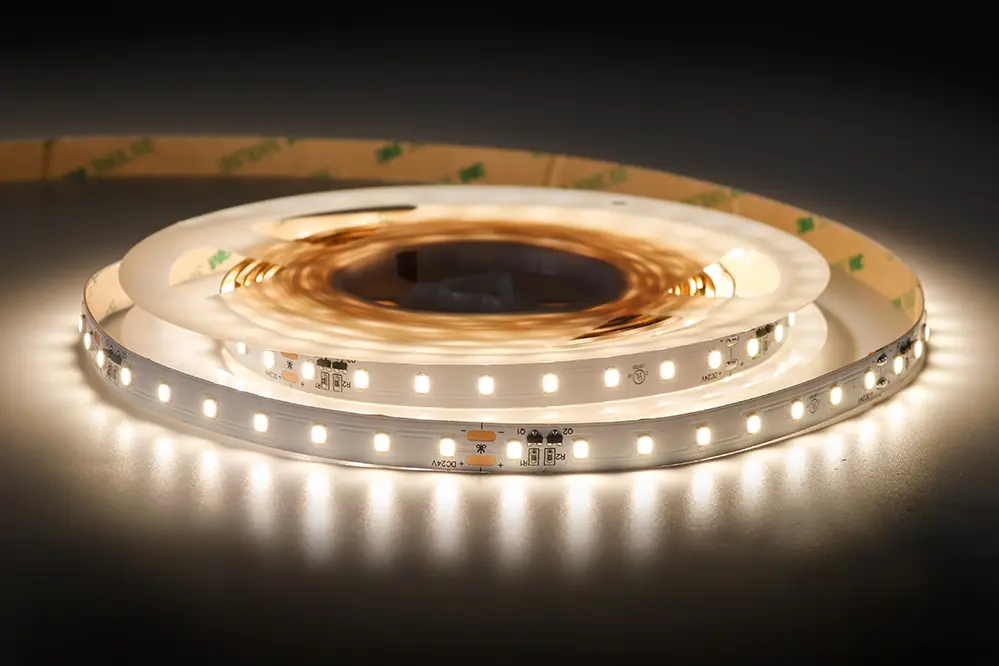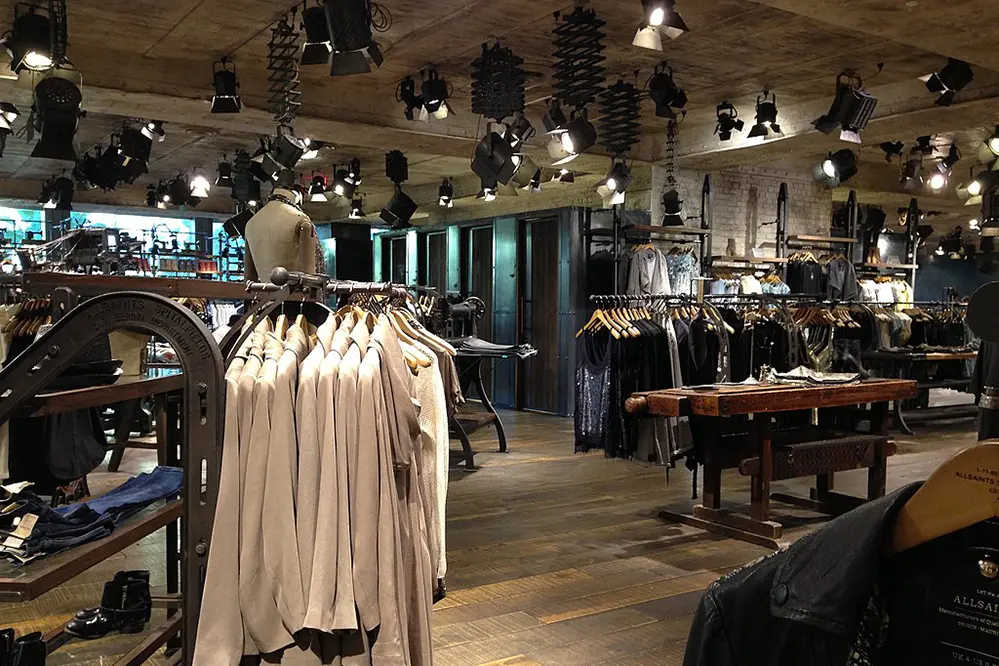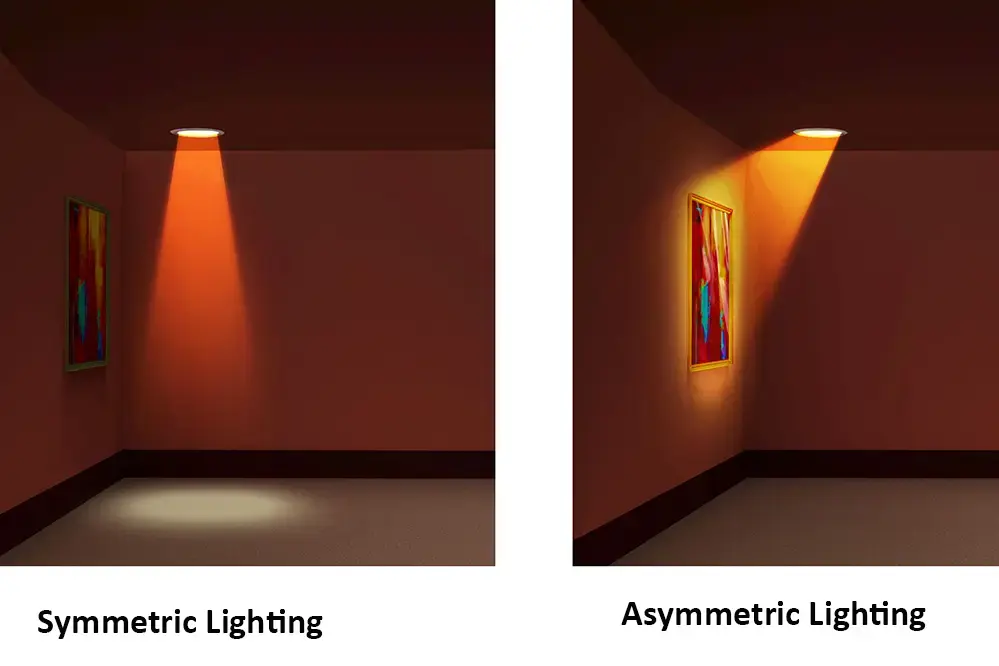Wondering about the lifespan of LED strip lights? Rest assured, you’ve come to the right place for accurate and concise information.
LED strip lights typically last up to 50,000 hours, offering longevity and reliability for various applications.
Delve deeper to explore factors influencing their lifespan, tips for maximizing durability, and the technology behind their efficiency.
Lifespan of LED Strip Lights
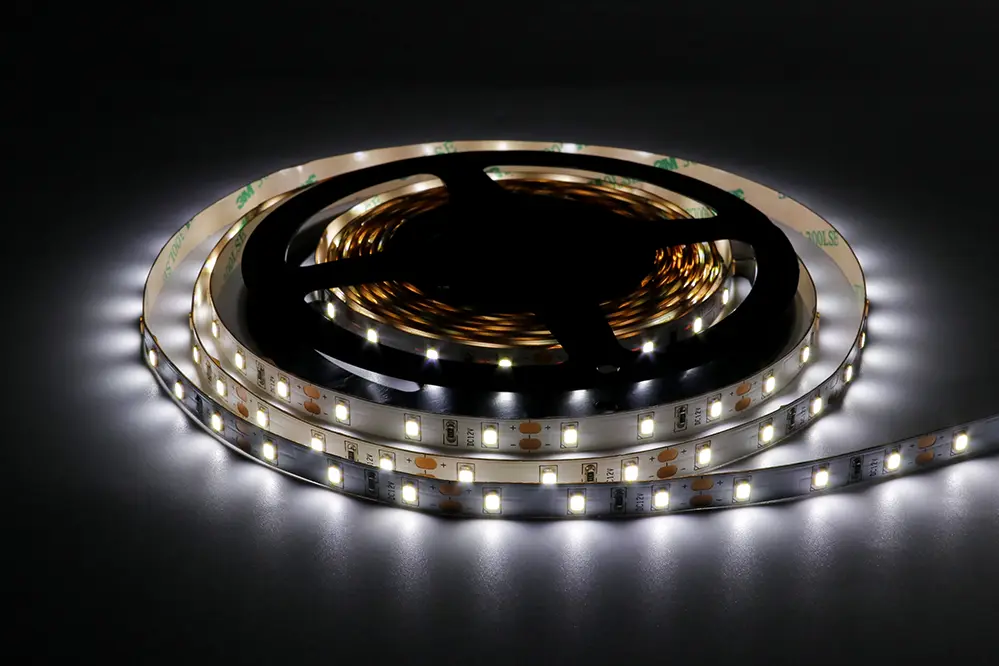
The average lifespan of LED strip lights can generally extend up to 50,000 hours. This impressive duration reflects not just in longevity, but also in cost-efficiency and sustainability.
It should be noted, however, that factors such as heat dissipation mechanisms, voltage fluctuations, and the operational environment can significantly impact the actual service life of these devices. Meticulous installation and proper usage are therefore paramount to reaching such high-hour milestones.
Moreover, advances in LED technology and the integration of higher quality materials aim to further extend the “on-time” of these lighting solutions. Predictive maintenance programs are instrumental in maximizing their lifespan.
Average Operational Hours
LED strip lights boast exceptional longevity with lifespans reaching up to 50,000 operational hours.
The intrinsic efficiency of LEDs contributes to their extensive lifespan, reducing the need for frequent replacements and maintenance.
While the upper threshold for their service life is significant, actual performance may vary based on factors such as usage patterns and heat management.
Ensuring optimal performance entails the implementation of sound installation practices and vigilant maintenance.
Factors Affecting Longevity
Heat dissipation is critical for LED longevity.
Efficient thermal management systems within LED strips mitigate the damaging effects of heat, enhancing their lifespan. High-quality LEDs are equipped with heat sinks and quality printed circuit boards (PCBs) to ensure heat is dissipated effectively. Conversely, poor heat dissipation elevates the risk of premature failure as components degrade rapidly under excess heat.
Usage intensity directly influences service life.
Extended periods of operation without rest can stress LED strip lights, potentially shortening their lifespan. It is thus advantageous to incorporate dimmers or control systems to manage usage intensity.
Voltage fluctuations are insidious adversaries.
Operating LED lights outside their optimal voltage range – due to unstable power supplies or overdriving – can impair their efficiency and considerably shorten their service life by causing undue stress on electronic components.
Environmental conditions are pivotal to longevity.
Exposure to adverse environmental factors such as moisture, extreme temperatures, or corrosive substances can deteriorate LED strip lights’ quality, reducing their operational hours. It is advisable to select LED strips with appropriate Ingress Protection (IP) ratings for the intended environment. As of early 2023, cutting-edge coatings and encapsulants further enhance the resilience of these lighting solutions against harsh environmental conditions.
Proper Installation for Durability
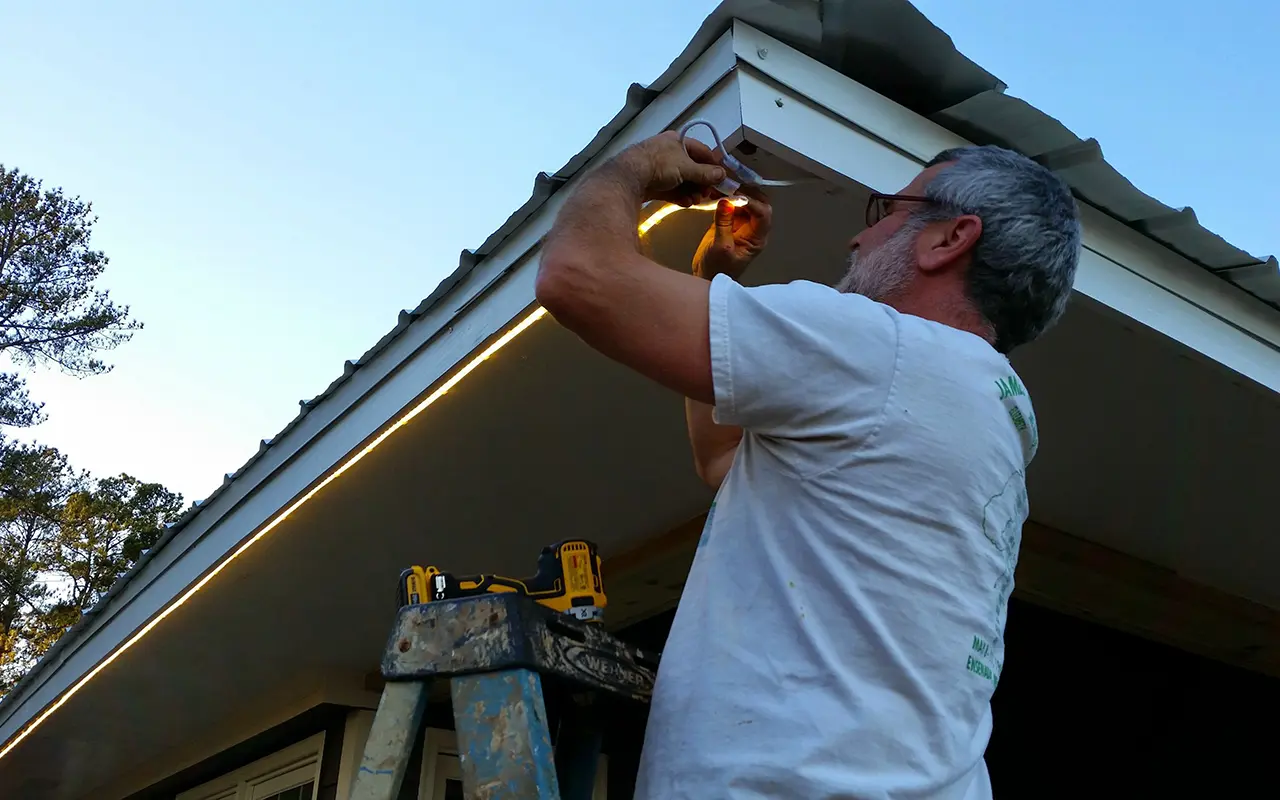
The groundwork for maximizing the lifespan of LED strip lights is, in essence, a meticulous and accurate installation process. Erroneously cutting, connecting, or attaching these strips can compromise their integrity, leading to localized failures or total malfunction. Ensuring all connections are secure and that the strips are affixed to a stable surface can mitigate these risks substantially.
To bolster longevity, avoid installing LED strip lights in high-stress scenarios where bending or frequent manipulation is necessary. Using mounting channels, which provide a protective and thermally conductive housing, can preserve the physical and electrical integrity of the strips. Proper heat dissipation is a critical factor; therefore, adhering to these guidelines ensures that the operational temperatures remain conducive to a prolonged and efficient service life.
Surface and Wiring Considerations
When installing LED strip lights, the nature of the mounting surface is a pivotal factor in determining both adhesive longevity and thermal management efficacy. Materials like metal, glass, or certain plastics can facilitate better heat sinking compared to porous surfaces like wood or drywall, which offer minimal thermal conduction.
The electrical wiring, the lifeblood of LED strip functionality, must be treated with utmost precision. It is imperative to utilize wires of appropriate gauge that can handle the current demands of the LED strips. Substandard or improperly sized wiring can result in voltage drops, leading to dimming and inconsistent illumination or, in extreme cases, electrical hazards. Meticulous attention to the wire paths is also crucial to avoid creating points of strain or inadvertent mechanical wear.
Furthermore, when applying strips to a surface, an even distribution of pressure ensures a reliable bond. If the adhesive backing is subject to uneven pressure or not firmly applied, sections of the strip may detach over time. This could expose the electronic components to environmental stressors and lead to premature failure of the lighting system.
Lastly, consider the routing of wires to best preserve the aesthetic and functional qualities of the LED strip lights. Strategic placement that avoids high traffic areas or potential pinch points not only preserves the visual flow of the installation but also reduces the risk of accidental damage to the wiring. Routine inspections of the wiring and mounting surfaces ensure that potential issues are identified and remedied before they escalate, maintaining optimal function and longevity of the LED lighting system.
Best Practices for Mounting
Select a clean, smooth surface for adherence to ensure maximum bonding strength, as debris and roughness can impede adhesion. The use of a primer might be warranted in some instances to prepare the surface.
Evaluate the mounting surface for heat dissipation capabilities. Avoid heat-trapping materials which can shorten LED lifespan.
When cutting LED strips to size, only cut along the specified lines to prevent damaging the circuitry. Ensure that each segment has a reliable power connection and avoid creating unnecessary electrical stress.
Integrate appropriate profiles or channels not only to protect the LED strips from physical damage but also to enhance thermal management. This is particularly imperative when installing in environments exposed to varying temperatures or prone to mechanical impacts. Moreover, channels can aid in creating a clean, polished look and facilitate even light distribution.
Assessing Quality and Types
In scrutinizing LED strip lights, one must first regard the build quality, which encompasses materials and manufacturing precision. Premium-grade strips offer advantageous longevity and consistent performance across the strip’s life span.
Key components like copper thickness and LED binning can reveal much about the robustness of a strip. High-quality, thick copper tracks ensure efficient electrical conductance while precision-binned LEDs maintain color uniformity and brightness levels, directly affecting the strip’s lifespan.
Moreover, distinctions between “constant current” and “constant voltage” strips are crucial. The former typically delivers enhanced consistency over long runs, preventing luminous degradation that is often observed with the latter configuration.
Materials and Manufacturing
The substance of LED strip lights is paramount.
Crucial to the longevity and performance of LED strip lights is the quality of materials used in their construction. Selecting premium materials such as high-purity copper for circuitry and advanced PCB (Printed Circuit Board) substrates, ensures not only an extended operational life but also a steadfast resilience against thermal and mechanical stresses. Additionally, the standard of encapsulation material significantly impacts the protection and luminance of the LEDs themselves.
Precise manufacturing techniques enhance durability.
The precision with which LED strip lights are manufactured – covering aspects from soldering to coating – plays a pivotal role in their lifespans. Controlled assembly environments and meticulous quality checks are employed to safeguard against any potential defect that could undermine the reliability and efficiency of the product.
Specialized machinery ensures consistent production standards.
The integration of sophisticated, automated machinery in the manufacturing process, coupled with skilled craftsmanship, is vital to delivering uniform quality in LED strip lighting. This harmonious blend of technology and human oversight guarantees each strip meets stringent specifications.
Indeed, a meticulous attention to detail in the production phase is crucial for superior LED strip lighting. With advancements in technologies and more stringent quality controls implemented in recent years, the manufacturing of LED strips has become more refined. These improvements are part of the reason behind the rising life expectancy rates of these products, promising enhanced sustainability within the industry.
Comparing Brands and Models
When assessing LED strip lights, brand reputation plays a crucial role in anticipated longevity. Some manufacturers like Unitop prioritize quality components and rigorous testing regimes, which are instrumental in the durability and persistence of their LED lighting solutions.
In industry comparisons, brands like Philips, Osram, and Cree often emerge at the forefront with their commitment to high-grade materials and advanced engineering practices. They have established a track record for producing LED strips that frequently outlast their cheaper counterparts, reflecting a synergy between brand ethos and product lifespan.
Yet, not all top-tier brands command an equal share of acclaim in terms of longevity. Variations in warranty offerings, customer feedback, and independent testing outcomes necessitate meticulous scrutiny for those seeking the pinnacle of LED strip longevity.
Moreover, within a single brand’s range, the longevity of LED strip lights can differ. Factors such as color temperature, luminous efficacy, and IP rating—a measure of environmental protection—can influence the operational lifespan of specific models.
Taking cognizance of these disparities is crucial when selecting LED strip lights for long-term applications. Professional guidance and comparative analysis are invaluable tools in discerning the optimal choice for enduring illumination.
Maintenance and Care Tips
To ensure that LED strip lights achieve their maximum lifespan, diligent maintenance and careful handling are imperative. Preventative measures, such as regular cleaning to remove dust that can cause overheating, are fundamental. Users should also avoid excessively bending the strips, as this can damage the circuitry and potentially reduce longevity. It’s crucial to adhere to the manufacturer’s guidelines for installation and operation, especially when considering dimming capabilities or utilizing compatible controllers. Inspection for signs of wear, such as dimming or color shift, is recommended to address potential issues before they lead to strip failure. By taking these proactive steps, users can maintain optimal performance and extend the service life of their LED strip lights.
Regular Cleaning Techniques
Effective cleaning of LED strip lights preserves functionality and aesthetic brilliance.
- Power Down: Before cleaning, ensure the LED strip lights are turned off and cooled down to avoid electrical hazards and damage.
- Dry Dusting: Use a soft, dry, and clean cloth to gently wipe away any accumulated dust on the LED strip surface.
- Spot Cleaning: For more stubborn dirt, lightly dampen a cloth with water and gently pat the affected areas. Avoid using harsh chemicals.
- Dry the Strips: After any spot cleaning, immediately dry the strips thoroughly with another clean, dry cloth.It is imperative to avoid moisture ingress during the cleaning process.
Consistent adherence to these techniques preserves the luminosity and extends the life of LED strip lights.
Troubleshooting Common Issues
When led strip lights exhibit irregular behavior, such as flickering or dimming, the power supply integrity should be the initial checkpoint. A stable, sufficient voltage is crucial for consistent performance.
In circumstances where segments of the strip fail to illuminate or display incorrect colors, scrutinize the connections for solidity and corrosion, particularly at soldering points and connectors. These are frequents sites of failures due to mechanical stress or environmental exposures. Proper inspection and timely maintenance can mitigate interruptions in illumination.
LED strips that exhibit color inconsistency across their length may be suffering from voltage drop. To diagnose and rectify this issue, one may need to inspect the wiring gauge and possibly install additional power feeds at various sections along the strip.
Lastly, when addressing the longevity and reliability of LED strip installations, environmental factors such as heat and moisture are not to be overlooked. These conditions can profoundly affect the electronic components enclosed within. Implementing additional protective measures like using silicone coatings or aluminum profiles can provide pivotal enhancements to durability and function.
FAQs
How long do cheap LED lights last?
Cheap LED lights typically have a shorter lifespan compared to higher-quality LED lights. The first thing to consider is the quality of the components used in these lights. Cheap LED lights often use lower-grade materials and manufacturing processes, which can result in a shorter lifespan.
On average, cheap LED lights can last anywhere from 10,000 to 25,000 hours. This is significantly less than the lifespan of high-quality LED lights, which can last up to 50,000 hours or more. However, it’s important to note that the lifespan can vary depending on factors such as usage, operating conditions, and quality of the specific product.
If you’re considering purchasing cheap LED lights, it’s important to keep in mind that they may need to be replaced more frequently. However, if you’re using them for occasional or temporary lighting needs, their shorter lifespan may not be a major concern.
To ensure the longevity of any LED light, regardless of quality, it’s important to follow best practices for installation and usage. This includes using compatible fixtures, avoiding excessive heat buildup, and providing proper ventilation. Taking these precautions can help maximize the lifespan of your LED lights, even if they are on the cheaper end of the spectrum.
What factors affect LED strip lights lifespan?
LED strip lights are a popular lighting solution due to their versatility and long lifespan. Several factors can affect the lifespan of LED strip lights, impacting their durability and performance.
Firstly, the quality of the LED chips used in the strip lights plays a significant role in determining their longevity. LEDs with higher-grade components tend to have a longer lifespan compared to those with lower-quality materials. It is important to choose LED strip lights that use high-quality chips from reputable manufacturers to ensure reliability and extended lifespan.
Secondly, the operating conditions can also impact the lifespan of LED strip lights. Excessive heat can reduce the performance and lifespan of LEDs. It is crucial to provide proper ventilation and avoid overheating the strip lights by installing them in areas with good air circulation. Additionally, using heat sinks or thermal management solutions can help dissipate heat and prolong the lifespan of the LED strip lights.
Furthermore, the power supply used to drive the LED strip lights is another crucial factor. Choosing a high-quality and reliable power supply ensures stable and consistent power delivery to the LEDs, minimizing the risk of premature failure. Poorly designed or inefficient power supplies can cause voltage fluctuations, which can negatively impact the lifespan of the LED strip lights.
Lastly, the level of maintenance and care given to the LED strip lights can also affect their lifespan. Regular cleaning to remove dust and debris can help maintain optimal performance and prevent overheating. Additionally, avoiding excessive bending or twisting of the strips and handling them gently during installation and maintenance can prevent damage to the LEDs and extend their lifespan.
In conclusion, several factors influence the lifespan of LED strip lights, including the quality of LED chips, operating conditions, power supply, and maintenance practices. By considering these factors and making informed choices, it is possible to ensure the longevity and reliability of LED strip lights in various lighting applications.
Do LED strip lights burn out?
LED strip lights are known for their long lifespan and durability. Unlike traditional incandescent or fluorescent bulbs, LED strip lights generally do not burn out. This is due to the way they work and the materials used in their construction.
LEDs, or light-emitting diodes, emit light when an electric current passes through them. Unlike incandescent bulbs that generate light by heating a filament, LEDs rely on a solid-state semiconductor to produce light. This semiconductor material is incredibly efficient and resistant to wear and tear.
Furthermore, LED strip lights are designed with heat management systems to dissipate any excess heat that may be generated. Heat is a common enemy of performance and longevity in electrical devices, so proper heat management is critical in ensuring that LEDs stay cool and functional for a long time.
While LED strip lights may not necessarily “burn out” like traditional bulbs, they can still experience a gradual decrease in brightness over time. This is referred to as “lumen depreciation.” However, the rate of lumen depreciation for LED strip lights is typically much slower compared to other types of lighting.
In summary, LED strip lights are highly durable and have an incredibly long lifespan. While they may not burn out in the traditional sense, their brightness may gradually diminish over time. With proper heat management and regular maintenance, LED strip lights can provide many years of reliable and energy-efficient lighting.
Can I leave LED strip lights on all night?
Leaving LED strip lights on all night is generally safe and energy-efficient. In recent years, LED technology has advanced, allowing for longer-lasting and more durable lights. Unlike traditional incandescent bulbs, LEDs produce minimal heat, reducing the risk of fire hazards. Additionally, LEDs are designed to be energy-efficient, consuming much less power than other lighting options.
In terms of safety, it is important to ensure that the LED strip lights are properly installed and maintained. Using high-quality LED strips and following the manufacturer’s guidelines for installation and usage will minimize any potential risks. It is also a good practice to periodically inspect the lights for any signs of damage or overheating.
Leaving LED strip lights on all night can also have practical benefits. For example, having LED strips as a form of indirect lighting can provide a soft and ambient glow throughout the night, creating a relaxing atmosphere. They can also serve as nightlights or provide visibility in low-light areas.
However, it is important to remember that even though LED lights are energy-efficient, they still consume electricity. Leaving them on all night will result in more energy usage compared to turning them off when not needed. To save energy and extend the lifespan of the LED lights, it is recommended to use timers or motion sensors to automatically turn them off when not in use.
In conclusion, leaving LED strip lights on all night is generally safe, energy-efficient, and can have practical benefits. However, it is essential to prioritize safety, proper installation, and energy conservation practices when using these lights. By considering these factors, you can enjoy the convenience and ambiance provided by LED strip lights while ensuring their longevity and minimizing energy consumption.
Any tips to extend their lifespan?
When it comes to extending the lifespan of lighting fixtures, there are a few important tips to keep in mind. First and foremost, proper maintenance is crucial. Regularly cleaning the fixtures and ensuring that they are free from dust and debris can help prevent the buildup of heat, which can shorten their lifespan.
In addition to cleaning, it’s also important to use the fixtures within their recommended operating parameters. Overloading the fixtures with excessive power or exceeding their temperature limits can put undue stress on the components and lead to premature failure.
Another tip is to consider the quality of the fixtures themselves. Investing in high-quality, durable fixtures that are specifically designed for long life can make a significant difference in their lifespan. These fixtures are often built with materials and components that can withstand the rigors of extended use.
Lastly, it’s essential to stay up to date with any manufacturer recommendations or updates. Manufacturers are continuously improving their products and may provide suggestions or new technologies that can help prolong the lifespan of the fixtures.
By following these tips, you can maximize the lifespan of your lighting fixtures and ensure that they continue to provide reliable and efficient illumination for years to come.
Conclusion
In conclusion, LED strip lights offer an impressive level of durability, surpassing many alternative lighting options. However, their lifespan is influenced by various factors such as installation, usage, and environmental conditions. By following proper installation guidelines, employing compatible dimming technology, and ensuring consistent power delivery, you can maximize the longevity of your LED strip lights.
Taking into account the nuances of usage and maintenance, LED strip lights can provide long-lasting illumination that is well worth the investment. By understanding the importance of proper care and optimizing operating conditions, you can enjoy the benefits of LED strip lights for years to come. So, whether you’re a lighting enthusiast or a professional, make the most of this energy-efficient and versatile lighting solution, knowing that with the right approach, LED strip lights can shine brightly for an extended period of time.
If you’re in the market for high-quality LED strip lights and neon strips, look no further than Unitop. As a professional manufacturer, factory, and supplier based in China, Unitop offers a wide range of LED lighting solutions that are built to last. With their expertise and attention to detail, you can trust Unitop to provide you with reliable and durable products that meet your specific lighting needs. Don’t hesitate to reach out to Unitop for all your LED strip light requirements and experience the difference of working with a trusted industry leader. Contact Unitop today and illuminate your space with confidence.
